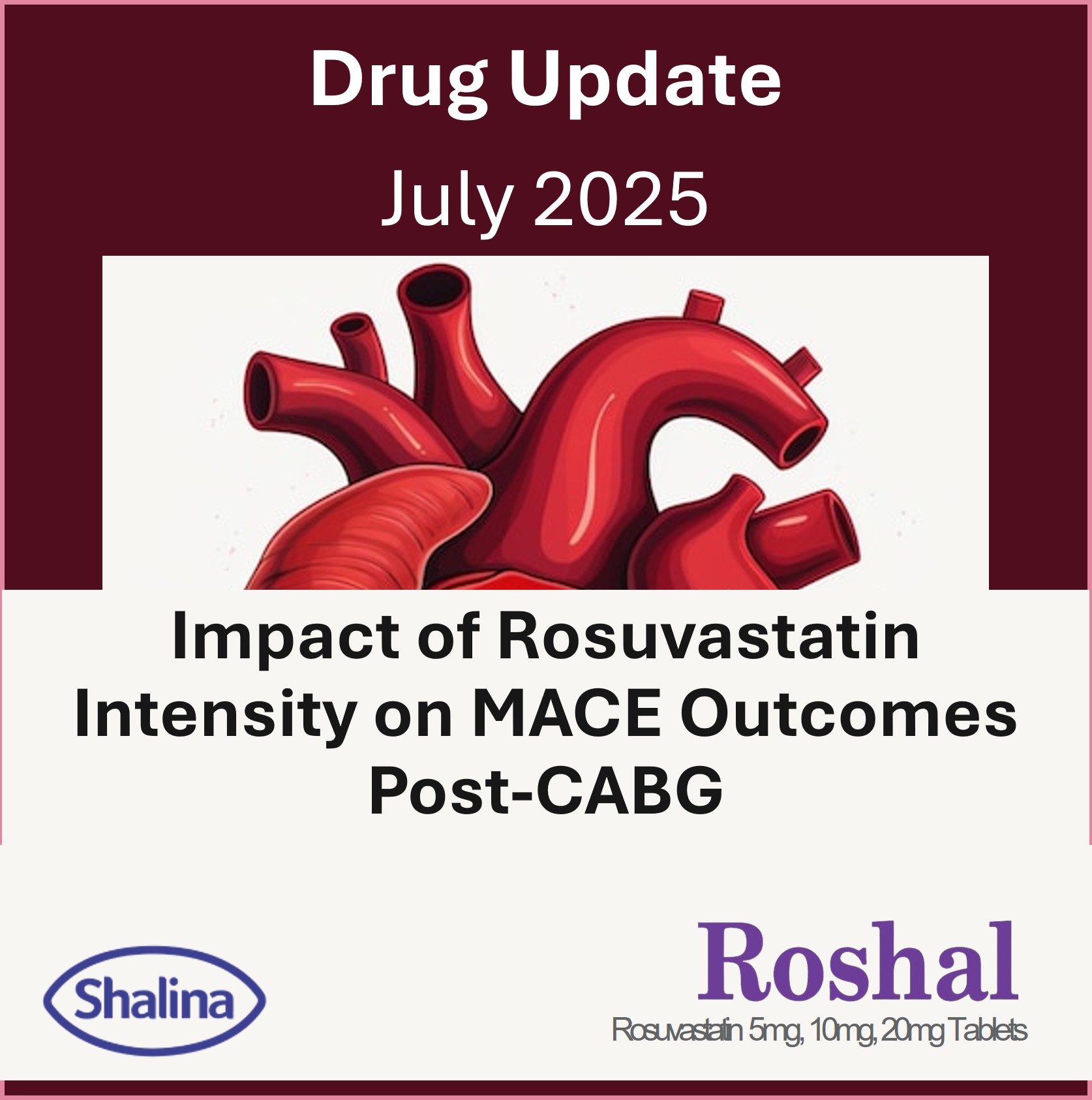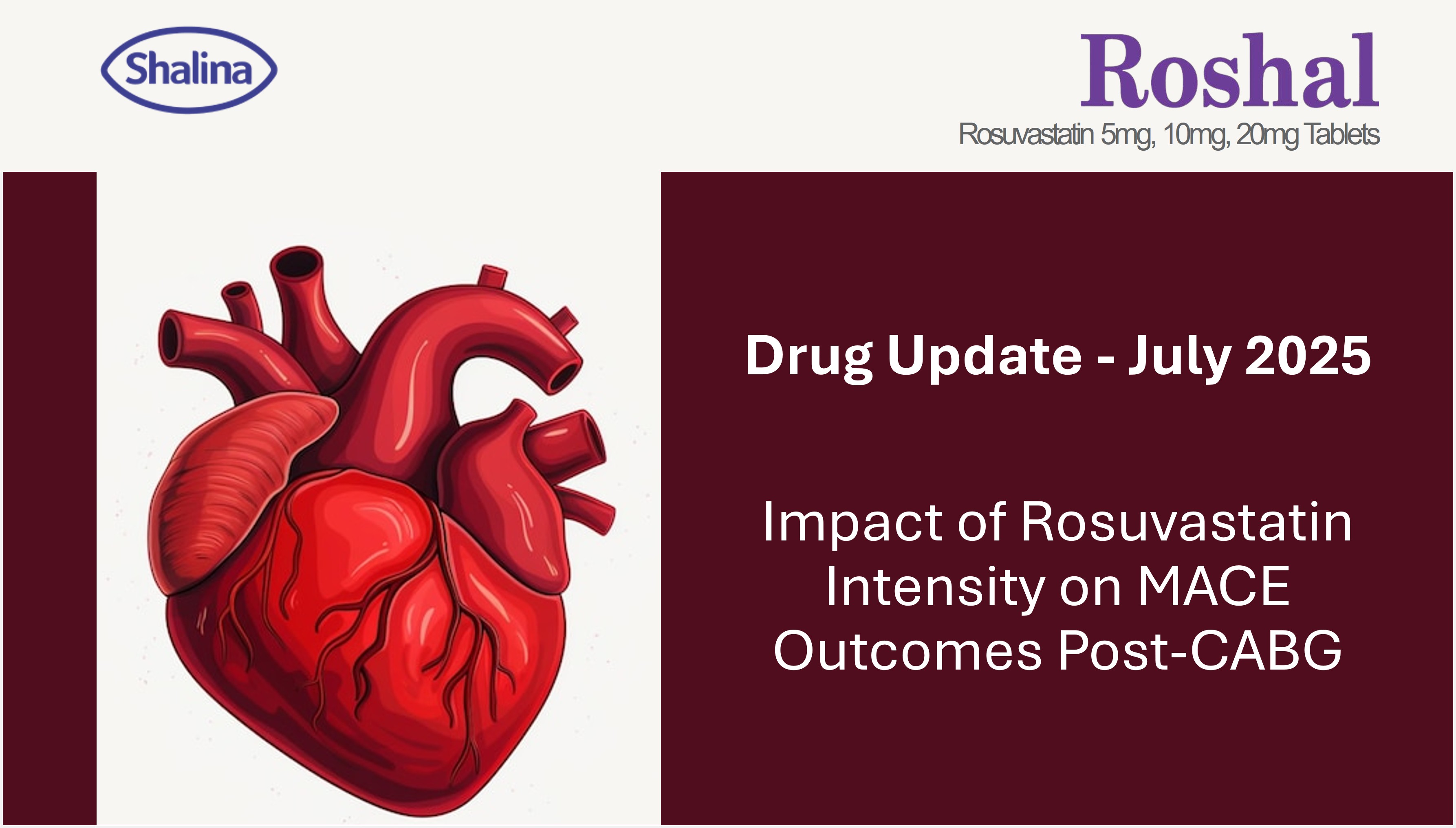Description
High-intensity statins like rosuvastatin significantly reduce major adverse cardiovascular events (MACE) following coronary artery bypass grafting (CABG), especially after 2 years. Patients on rosuvastatin had lower LDL levels and improved long-term cardiac outcomes versus those on low/moderate statins or no statin. This reinforces rosuvastatin’s role as a preferred high-intensity lipid-lowering therapy post-CABG when tolerated.

